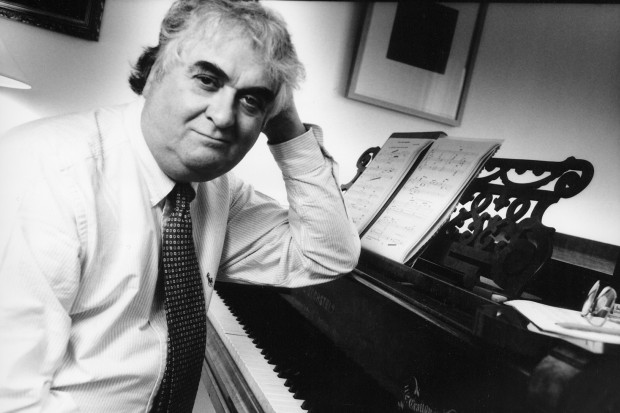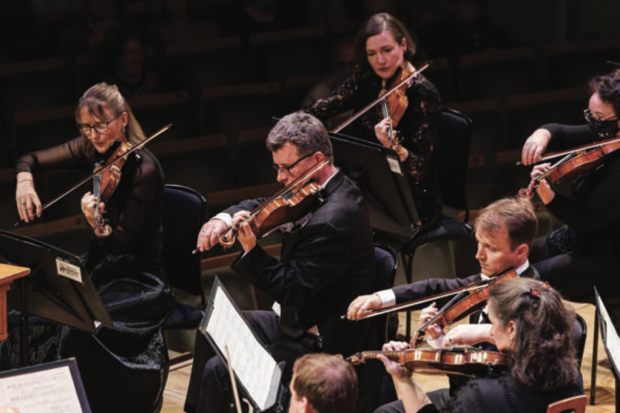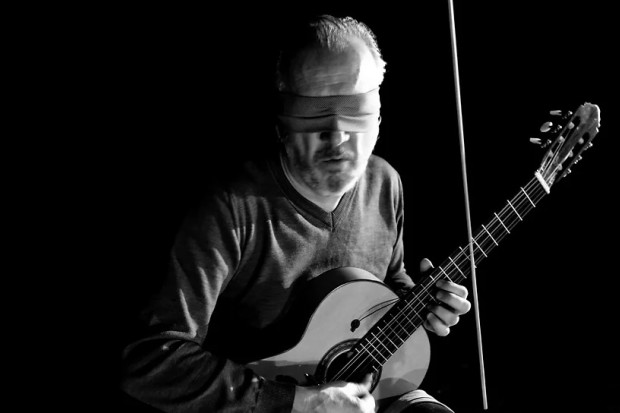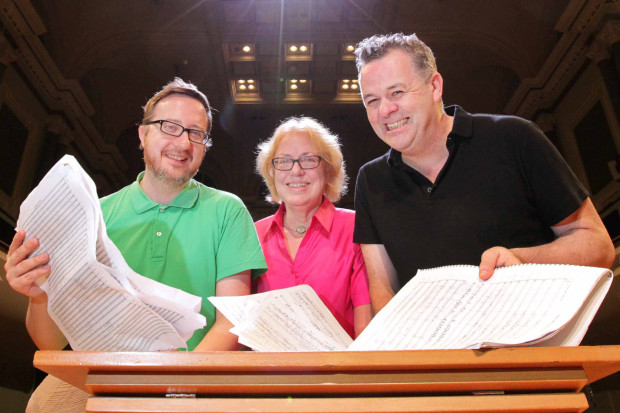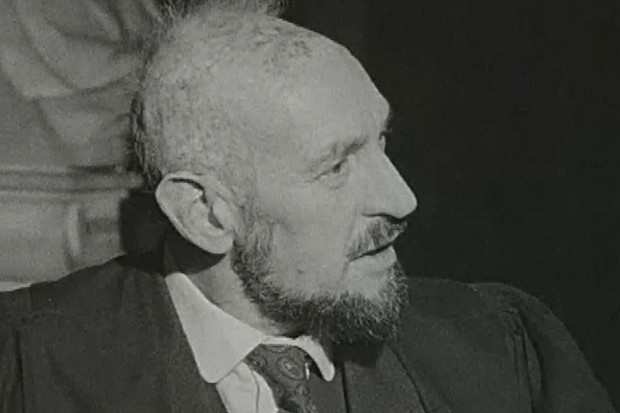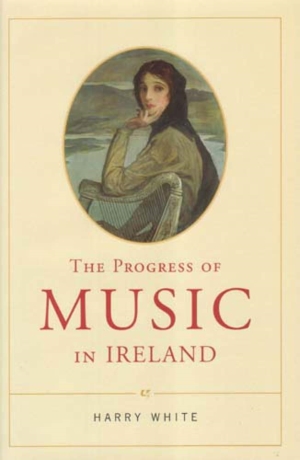
Music, Ideas and History
It is a commonplace to observe that the way in which we look at the past reflects present-day concerns – and, as both revolutionaries and reactionaries will confirm, controlling the way the past is seen is one way of shaping or influencing the future. The way in which we look at Ireland’s musical past and try, for example, to explain the prolonged failure of major composers to emerge, feeds into the cultural atmosphere of the present, the atmosphere in which, or against which, future composers define themselves.
Over the years, individuals such as Brian Boydell, Aloys Fleischmann and Ita Hogan have made substantial contributions to writing the history of classical music in Ireland. The most influential figure in the field today is Harry White, Professor of Music at UCD. In addition to founding the Society for Musicology in Ireland, to representing Ireland at international gatherings, to being general editor of the Irish Musical Studies series and to co-editing (with Michael Murphy) Musical Constructions of Nationalism (2001), he is the author of The Keeper’s Recital (1998) and now of a collection of essays, The Progress of Music in Ireland. Given that The Keeper’s Recital is the only recent book with an overarching view of the place of classical music in Irish culture and that it appeared in the prestigious Field Day series, given that White has been so frequently called on in recent years by the editors of encyclopedias of Irish history and culture (S.J. Connolly, Roy Foster, W.J. McCormack, and so on), that he is therefore the principal authority encountered by non-specialists, it is important that his work in the field of cultural history should receive proper critical attention.
Even a brief glance at The Progress of Music In Ireland reveals that this is by no means a mere collection of leftovers from the Keeper’s Recital project. Chapters two and three look at music in Ireland after Ó Riada; chapters four and five compare the relationship between music and nationalism in Ireland with the German and Czech experience; the three following chapters look at music or parallels with music in the work of Friel, Beckett and Joyce; chapters nine and ten focus on music education and musicology in Ireland; the concluding chapters are tributes to Brian Boydell and Aloys Fleischmann, though the former revisits the eighteenth-century scene that so fascinated Boydell and seeks to understand the composer’s turn to history in the light of the unreceptive world in which he had to operate.
A number of these essays originated in addresses to conferences and the reader can sense the personal involvement of the writer in his subject-matter. There is no shortage of strong opinion, diplomacy is not always the order of the day and a changing personal experience of music informs the work. As one of White’s recurring motifs is the subservience of music to literary culture, it is interesting to find him turning his attention to Irish writers. Just as White’s comments on the work of individual composers in The Keeper’s Recital were often succint and illuminating, his musical background enables him to bring something fresh to his careful reading of his favoured authors. These essays in particular might draw readers who would not usually concern themselves with musical matters. On the subject of education, White vigorously rejects what he sees as the anything-goes American notion of music as self-expression in favour of the virtues of a solid grounding in the classic works of the European tradition. The forthright expression of this view should stimulate debate, though White’s belief that classical music has not been an integral part of Irish culture could have led him to seek convergences between the Irish and American experiences.
Anyone familiar with The Keeper’s Recital will know that White has a theory to explain the failure of classical music to root itself in Irish culture, and for the consequent failure of this country to nourish Irish composers of international stature. As almost every essay in The Progress contains some reformulation of this theory, as White on several occasions refers the reader to The Keeper’s Recital for fuller detail, and as some version of this theory is adhered to by other writers (such as Joseph Ryan, Richard Pine and Michael Murphy), it is as well to recapitulate it here. It should be pointed out that Joseph Ryan’s unpublished thesis on ‘Nationalism and Music in Ireland’ (Maynooth, 1991) underpins White’s version of history. White refers to it on page 61 as the ‘key work on the subject’. Ryan is a contributor to Music in Ireland: 1848–1998 (edited by Richard Pine), the Thomas Davis lecture series – a nice irony, as will become clear – and, in more grandiloquent style, in Musical Constructions of Nationalism. To disagree with White is necessarily to disagree with Ryan.
White suggests that, in a country polarised along colonial and nationalist lines, the sheer weight and prestige of an ‘ethnic repertory’ put at the service of a predominantly verbal nationalist culture meant that an autonomous classical music culture on European lines could not develop. As a result, the creative potential of Irish composers was never realised, no major figure of European stature ever emerged and even today – in the changed conditions of an economically developed country that has shed much of its old-style ideological baggage and is fully participating in the European Union – composition has not been able to flourish, while social and symbolic prestige continues to attach to traditional music itself or to orchestral works that defer to or draw on it in various ways.
It will be noticed that White refers to both colonial and nationalist ideologies and it would not be difficult to compile a list of the occasions on which reference is made to government misrule in Ireland. There is no equivalence between the two poles however: where White engages in cultural history, he is almost exclusively concerned with the national or nationalist forces that have hindered or blocked the growth of classical composition. As the essays relating to musical history in The Progress move back and forth in time and as their sequencing does not follow chronology – music after Ó Riada is dealt with at the beginning of the book; Boydell on the eighteenth century at the end – it would be confusing to deal with them in order of appearance. Instead, the material, and the questions it raises, will be treated here in a way that roughly maps a chronological history of classical music in Ireland.
Eighteenth- and nineteenth-century musical life
White’s view of music in Ireland in the eighteenth century can be gleaned from his essay on the musicology of Brian Boydell in The Progress. White acknowledges that classical music was a ‘borrowed’ culture, confined to an elite and, as with Handel’s oratorios, bound up in some of its manifestations with a celebration of the (Anglican) church and the (Hanoverian) state. It is worth remarking that it is only in a context such as this, where he is dealing with a historian of music who treats the British dimension as crucial, that White gives any weight to the connections between Ireland and Britain. As in The Keeper’s Recital, however, he seems determined to present an entirely negative contrast between musical culture in Ireland and its far happier state in Europe. A more thorough engagement with the poor state of musical culture and composition in England at that time would enable us to come to a judicious view of the importance or otherwise of particular Irish conditions in impeding creativity. Without showing the extent to which the Anglo-Irish antiquarian interest in Gaelic culture pervaded society or influenced individual composers, White uses a lengthy and entertaining quotation from one antiquarian, J.C. Walker, to endorse his own gloomy thesis and to present a picture of Dublin musical culture as far inferior to that holding sway in England. It is extraordinary that a cultural historian shows no interest in the extraordinary trove of material gathered by Ita Hogan in her Anglo-Irish Music 1780-1830.
It is in chapter five, ‘Art music and the question of ethnicity: the Slavic dimension of Czech music from an Irish point of view’, that White’s understanding of nineteenth-century Ireland emerges. Once again occluding the British dimension, White strikes a familiar note:
When the very notion of ‘classical music’ became emblematic of colonial mismanagement and self-indulgence, the corresponding reliance on the ethnic repertory as a symbol of dispossesion and political aspiration ruinously displaced the cultivation of music other than as a marker of cultural separatism. And although one could trace a correspondence between the formation of societies, associations, ensembles and so on devoted to the rehabilitation of art music in Dublin as in Prague through the first half of the nineteenth century, this essential process of alienation was too deeply ingrained in the Irish mind for these habits to take with any significant level of absorption or endurance.
(p. 75)
This passage demands commentary. White shows a preference for emblems and dramatic contrasts over nuanced exploration of history. Effectively, White is so happy with his formula that he absolves himself of the need to pay attention to cultural developments that might challenge or, at the very least, enrich it. Developing a musical infrastructure, or attempting to attract a new audience for classical music, would have been a waste of time, as the Irish mind was already set in a pattern. Neither here nor elsewhere in his work does White look at musical education in the period, or show in detail how class and religion might have affected the spread of an informed culture of classical music, or show whether a real effort was made to create an audience, or demonstrate that there was a single dominant attitude to classical music in nationalist Ireland, or demonstrate that creativity in Ireland was at a lower level than in England, or reflect on the fact that composers like Balfe and Wallace were able to fit into London musical life and to operate at least on a level with their contemporaries.
Davis and Hyde
If White’s theorising on nationalism and music were grounded in a command of the workings of nationalism in Ireland, his ventures into other musical cultures might be welcomed as a broadening of Irish intellectual horizons. The following quotation shows how White interprets Thomas Davis and the Young Irelanders:
Thomas Davis’s hostility to the European art tradition of his own day (‘scented, paltry things from Italy’) is part of a wider repudiation of art music which gained ground throughout the nineteenth century with the corresponding increase of sectarian (nationalist) culture in Ireland and the equation of ‘classical’ music with colonial oppression. (p. 66)
(One can only speculate as to why an Irish cultural historian, writing primarily for an Irish audience, should persistently use the term ‘sectarian’ against normal Irish usage. Anyone agitating against the status quo can be called sectarian in White’s usage.) As a reading of his essays rather than a few paragraphs relating only to classical music would make clear, Thomas Davis was not hostile to the European art tradition. He was delighted, for example, that the casts of classical statuary in the Crawford Gallery in Cork would provide a sound model for the aspiring artist. Davis deploring the dominant taste for ‘scented, paltry things from Italy’ is in fact like Harry White deploring the dominant taste for ‘marketable celticism’ today. Each is attempting to build an alternative taste. Sentimental ballads and songs from plays, decontextualised arias lifted from operas, foreign interpreters being prized beyond their merits, and so on – Davis could not find, in the incoherent musical culture around him, the basis for an Irish school of composers.
The country he was dealing with was divided in religion and politics; increasing numbers of people were shifting from the Irish to the English language, and thus losing access to their own culture; levels of formal education were extremely low. Davis therefore sought to identify and lay the basis for a common, non-sectarian, constructive, confident Irish culture that would eventually stand comparison – in learning, art, music, agriculture, mining and industry – with the rest of Europe. Where music was concerned, he felt that the melodies of Thomas Moore – the first bard of the newly English-speaking populace as well as a star of the drawing-room – were too passive and nostalgic. His new Ireland required a more heroic, manly style. In this view, Davis was very much of his time – he is in many ways a typical Victorian crusader/improver – but he was making a serious effort to respond to the conditions of his time. We can agree today that he had limitations as a writer, as an art and music critic, as a thinker, as a politician, as a man of his class, but it is the job of a cultural historian to understand rather than to caricature.
As might be expected, White misreads Douglas Hyde in similar fashion. Suggesting that later nationalists ‘urged the disavowal of any kind of art music’, White refers the reader to a section of Hyde’s talk on ‘The Necessity for De-Anglicising Ireland’. But Hyde is not attacking ‘art music’ or European culture; he is saying that until Ireland recognises and deals with the trauma involved in shedding its own language and coherent culture, it will continue to adopt a mangled anglicised culture while expressing political hatred of England. Hyde wants a culture built on self-respect, not on hatred or rejection of others. A culture that is jettisoning traditional singing and piping will indiscriminately haul aboard the barrel organ, the German band and the English music hall ballad. No more a post-modernist than Harry White is, Hyde does not see this as a solid foundation for musical culture in Ireland.
The Irish and British experience
The closing decades of the nineteenth century and the opening decades of the twentieth are crucial in many regards to an understanding of the relationship between classical music and Irish culture. First, this was the period in which Ireland moved towards asserting its political and cultural autonomy with regard to Britain. Second, the emergence of a talent like Stanford’s did not trigger a musical equivalent of the literary revival. Third, British music underwent a renaissance – in terms of performance, of public respect, of organisation and of composition. It is at this point that a serious divergence occurs between the Irish and the British experience.
Does the White formula finally come into its own and open the door of understanding? White’s fifth chapter compares Dublin with Prague and Stanford with Dvorak, but he also has to deal in some fashion with the British dimension. White contrasts the musical infrastructure in Prague with the poverty of Irish musical culture, contrasts Dvorak’s success in articulating a Czech voice with Stanford’s ‘spiritual tourism’ (p. 79), and contrasts the decline in Stanford’s personal productivity and reputation with Dvorak’s continuing presence both as a composer of international reputation and as an emblem of national culture.
Why didn’t he consolidate his place in British musical life? Why didn’t Stanford’s example trigger a burst of creativity in Ireland? White suggests why this was not a simple matter of talent: ‘first that his Irish birthright, and more precisely still his Anglo-Irish background, hopelessly compromised his ambitions to become an English composer, try as he might to assume and discard his Irishness at will.’ It has become almost routine to suggest that anyone of Anglo-Irish heritage was automatically riven with doubt and insecurity. That some artists were is not in question; but it would be absurd to suppose that this was the condition of the very many soldiers, administrators, business-people and artists who made their careers in Britain or the Empire. Having moved to England at the age of twenty, Stanford was soon to distinguish himself as composer, teacher and organiser, alongside Hubert Parry. To see him as trying to discard and assume his Irishness is a melodramatic over-interpretation of the relationship of a person of his time, class and religion to Englishness – a relationship that allowed him to see himself as Irish, English or British according to circumstances. Only when Home Rule and then some form of independence became a real possibility did Ireland become a source of anguish to Stanford. But already, with the sudden and relatively late emergence of Elgar’s talents, Stanford’s primacy as a composer had been eclipsed – along with the solid work of other founders of the British musical renaissance.
The musical nationalism involved in that renaissance is fleetingly alluded to in White’s essay, but is not explored at all in The Keeper’s Recital. Herein lies a crucial difference between W.B. Yeats and Stanford. Yeats, though unarguably steeped in the English literary tradition, saw a potential confluence between his own growing powers, creative and organisational, and those of an Irish culture in formation. He acted on this intuition and, since then, nothing – his dislike of the evolving Irish state, his attraction to the esoteric and to the authoritarian, his snobbery, his myth-making – has dislodged him from the centre of English-language culture in Ireland. Stanford, with energies comparable to Yeats’s, read the political and cultural situation differently. His adult life was spent in England; his energies were devoted – very successfully – to renewing music in England; and he made no particular effort to address the particular deficiencies in the musical culture into which he had been born. (Olinthus J Vignoles’ Memoir of Sir Robert P. Stewart, Kt., – composer, conductor, Professor of Music at Trinity (1862-94), organist at the Dublin cathedrals – unwittingly exposes how extraordinarily insulated the standard-bearers of classical music could be from the rest of Irish society and how unconcerned many of them were to bring the music to those outside their own class and religion.) With greater compositional talents than Stanford’s coming through in Britain, and with history in Ireland lurching in a direction he had resolutely opposed, it is not entirely surprising that Stanford would not play a central role in Irish culture.
The classical music perspective
What has been argued here is that Irish cultural history – and Irish musical history within it – is a far richer and more nuanced story than that presented in The Progress of Music in Ireland. It follows, not that White’s entire argument must be discarded as worthless, but that it needs to be tested and enriched by a fuller engagement with the changing patterns of political, cultural and musical history both within Ireland and between Ireland and Britain. Other comparative perspectives – European and non-European – can also be opened up. What is presented as cultural history in The Progress is little more than the reiteration of an ahistorical formula.
As a cultural historian, White is disabled by his lack of interest in music as it figures in the pattern of people’s lives. We have seen how little interest he showed in the texture of musical life in the nineteenth century, in matters of class, religion and education, or in the world-view of various sectors of society. If White acknowledges the sheer variety of music – religious, sentimental, music-hall, operatic, patriotic – in the Dublin of James Joyce, such knowledge does not elsewhere deflect him from his schematic, polarised presentation of music in Ireland.
Let us look at Ireland as it might appear to some of those whose principal attachment is to the sphere of classical music. Ireland has not produced a great deal of high-quality classical music. There is no Irish composer whose name springs to the lips of the average European concert-goer or academic. Ireland scarcely figures in studies of classical music in Europe. Foreigners with any awareness of Irish music will tend to think of traditional music and its derivatives or of particular rock performers. Ireland, then, may seem a distressing anomaly in European terms. Classical music is not given a place of honour within the state and within culture in general, while it is almost unknown abroad. Explaining all this repeatedly to foreigners may become irksome and even embarrassing. This seems to be the Ireland of the academics and commentators who share Harry White views.
We may suppose that it was with a dark irony that White chose to title his latest book after Mathew Pilkington’s eighteenth-century poem, which contrasted the music of the bards with the new music of court and city. For White, the history of classical music in Ireland is not a progress: it is a succession of failures, a serial catastrophe. The pleasure a Sligo fiddler gave to his community means, the creativity or otherwise he showed in handling the idiom he inherited, means nothing to White. The fact that, until recently at least, opera had many well-informed working-class devotees in Cork, does not matter as this did not lead to the writing of new Irish operas. Only the history of classical composition really matters. It is to explain the poverty of that history that he becomes a cultural historian.
Interpreting the present
At the end of The Keeper’s Recital, White saw Sean Ó Riada’s failure to develop as a European-style composer and his turn towards traditional music as emblematic. Musical creativity was to be sought among the poets – he singled out Seamus Heaney – rather than among the composers. In The Progress, he revisits Ó Riada and brings the story up to the present. It is possible that White’s dark view of history colours his reading of recent and contemporary music. There is not space here for a full consideration of the issues, but a number of points can be made.
Ó Riada’s renunciation of the European tradition and early death make him almost too convenient a symbol. White treats ‘the Ó Riada crisis’ as something to be faced or avoided by every Irish composer. White wants his Irish composers to bring something of their own place and national experience to the European language of music. He appears unhappy that Gerald Barry’s music, for example, ‘stands deliberately aloof from any engagement with “Ireland” as a received idea’ (p. 32). Unhappy that classical music had been subservient to the national idea in earlier times, he now seems unhappy that today’s composers are impatient with ‘the tyranny of Irish musical ideas’ (p. 32). He contrasts Barry’s rootless modernism with Stockhausen’s version, which ‘enjoys a strong continuity with the German music that precedes him. And in such terms he is received, performed and understood. No such continuity is available to Barry…’ (p. 33). White sees John Buckley’s Oileáin (which offers ‘a bridge back to the narrative past’ while remaining ‘resolutely independent of folk music’ (p. 33) or Kevin O’Connell’s From the Besieged City (which, passing by Poland, indirectly addresses Derry and the Northern crisis) as offering more constructive models for music in Ireland.
At this point, could a note of optimism not be sounded? Must we see the world of composition as once again being thrown into crisis, undermined, depleted and exhausted by the burden of Irishness? Should we not welcome the fact that so many young composers have entered the field and see the various models offered by Barry, Buckley, O’Connell and others as an indication that ideas and energies are stirring? If Irish musical history does not offer continuity, what is the point of lamenting its absence? Is it not particularly open to Irish composers, largely free of the looming shadows of the masters, to seize this point in history – when various traditions, including the high modernist one, may be losing momentum – as a creative opportunity? With his focus on composers and composing in the classical tradition, White cannot help but see the past as catastrophe and Ireland as an unhappy anomaly. As we have seen, this has led to poor history and to a pessimism that would impede creativity if it were to become general.
Ideas of traditional music
In the chapter on music after Ó Riada, White is concerned with ‘the idea of Irish music which the traditional repertory of folk melodies both embodies and symbolizes. I am talking about an idea which dominates the musical imagination, and expressly the Irish musical imagination. … Among the things which it has accumulated, notably since its dramatic and redemptive retrieval in the late eighteenth-century – are a symbolic resonance and power unequalled by any other marker of Irish identity, with the possible exception of the Irish language itself.’ (p. 17) To talk of the retrieval of the traditional repertory in this way demonstrates indifference to the practice and practitioners of the music; instead, it is the idea of the music in the minds of a cultural elite that matters. Eighteenth-century antiquarians, ninetenth-century arrangers, clergymen of various hues, political and cultural activists, composers, Feis organisers, lifetime presidents of Comhaltas – all have had their idea of what traditional music is and should be. But history is not just an examination of such ideas: it must enquire into and respect the lives of those who embodied, rejected, transformed or mangled them.
Musical history in the White mould presents an aggravated case of a syndrome that affects not just Irish history-writing but Irish intellectual culture more generally today: instead of engaging critically and creatively with the particular nature of our experience, there is a belief that our particular experience is a deviation from some pre-existing, external model. The historical conditions of the second half of the nineteenth century meant that the mass of the people – rural and frequently impoverished – were not exposed to classical music but that they expressed themselves in another idiom. There was a mismatch between the music of the people and such music as was encountered in the education system. Those who had ownership of classical music in Ireland did not do enough to spread their enthusiasm and did not break its association with elite and sometimes colonial attitudes. The variegated musical culture of the towns and cities was not very different from what had prevailed in both Britain and Ireland over the previous century. In Ireland it would continue to prevail. When the repeated frustration of the Irish desire for autonomy, democracy and respect led to an intense period of political and cultural agitation, there was no tide of energy to push the music towards the centre of cultural life in the Free State. The democracy – not to mention the social life and the culture – that took shape in independent Ireland had a strong populist element.
This is our inheritance. In music as in politics, those who work with it will achieve more than those who trigger colonial echoes by lecturing it from a distance or from a height. The White thesis sets up and aggravates a conflict between traditional and classical music, between the Irish and the European. The effect of this simplification, though presumably not its intention, is a distortion of the past, the entrenchment of an uncreative culture of blame, and the perpetuation of the unhealthy cultural condition it purports to diagnose.
Harry White, The Progress of Music in Ireland
Four Courts Press, Dublin, ISBN 1-85182-879-6, 208pp
€45/£40/$45 hbk
Published on 1 July 2005
Barra Ó Séaghdha is a writer on cultural politics, literature and music.












